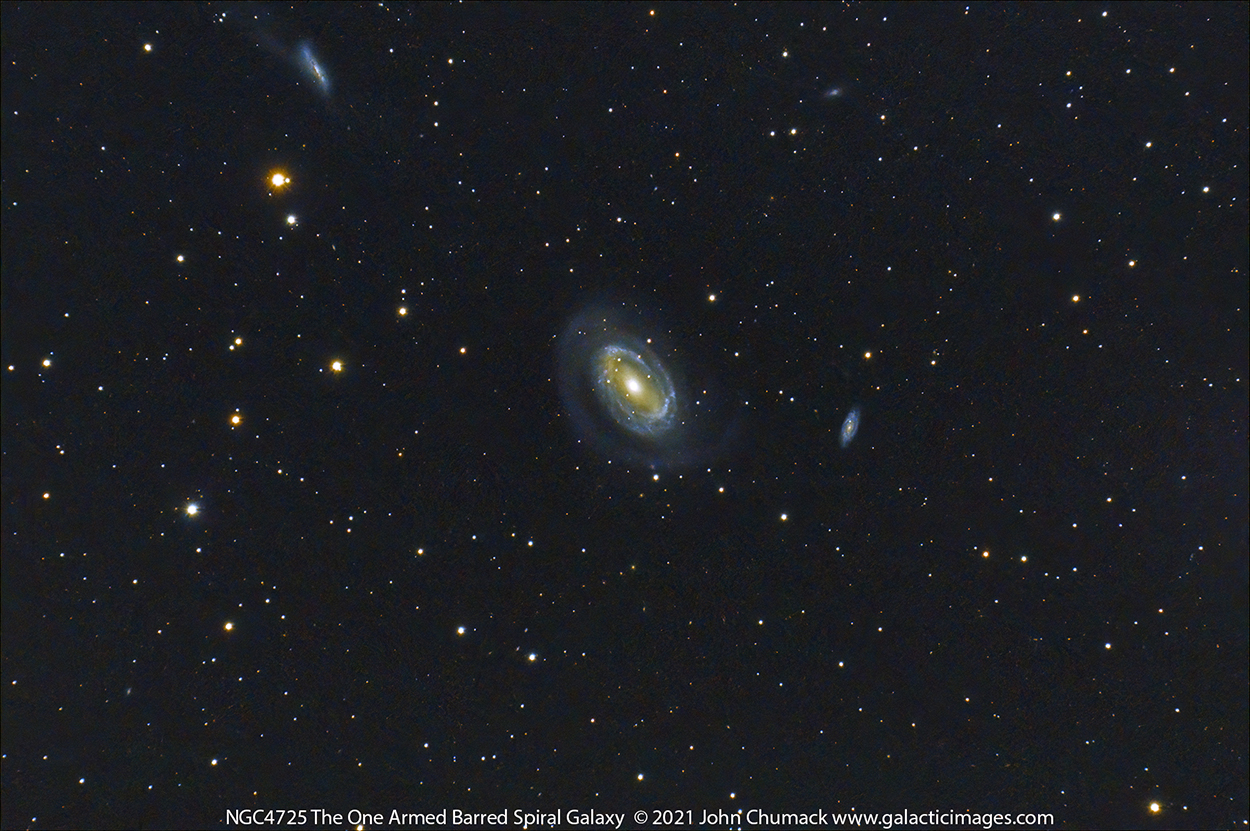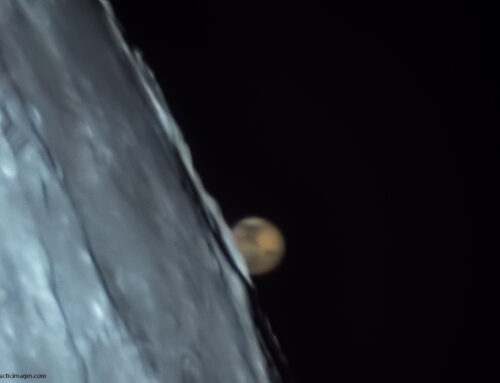NGC 4725 is an intermediate barred spiral galaxy with a prominent ring structure, located in the northern constellation of Coma Berenices near the north galactic pole. It was discovered by German-born astronomer William Herschel on April 6, 1785. NGC 4725 is over 100 thousand light-years across and lies 41 million light-years away from the Milky Way.
NGC 4725 at Magnitude 10.1 is the brightest member of the Coma I Group of the Coma-Sculptor Cloud, although it is relatively isolated from the other members of this group. This galaxy is strongly disturbed and is interacting with neighboring spiral galaxy NGC 4747(upper left), with its spiral arms showing indications of warping. The pair have an angular separation of 24′, which corresponds to a projected linear separation of 370 kly. A tidal plume extends off the screen from NGC 4747, but also toward NGC 4725. The galaxy to the right of NGC4725 is 12.5 magnitude spiral galaxy NGC4712.
This is a suspected type 2 Seyfert galaxy with a supermassive black hole at the core. The morphological classification of this galaxy is SAB(r)ab pec, indicating a peculiar, weakly-barred spiral galaxy (SAB) with a complete ring surrounding the bar (r) and somewhat tightly-wound spiral arms (ab). It is actually double-barred, a feature found among about a third of all barred spirals. The galactic plane is inclined by approximately 46° to the line of sight from the Earth.
The ring structure of the galaxy is a region of star formation. It is offset from the galactic center and displays non-circular motion. There is a compact radio source positioned approximately 6,200 ly from the nucleus of NGC 4725. Since there is no optical counterpart at that position, this may be a star forming region that is heavily obscured by dust.
There are many smaller background galaxies visible in my image as well.
Captured on 03-19-2021 with my
Explore Scientific 102mm Triplet APO Refractor telescope, Bisque ME Mount, QHY 183C Cooled Cmos Camera,
90 min exposure, (18 x 300sec subs), Darks, Flats, Lights captured with SKyX Camera software, guided with PHD2, stacking with DSS, Final processing Pixinsight, & Adobe CS 2021.
Best Regards,
John Chumack
www.galacticimages.com







